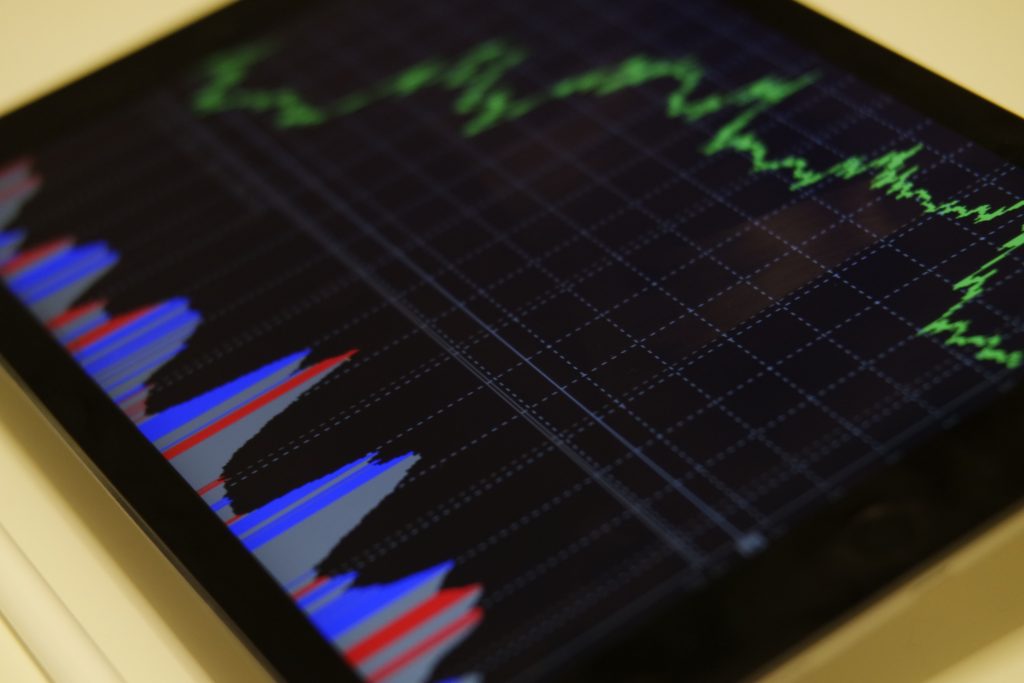Table of Contents
How To Define Scale?
A scale is a set of values or numbers that indicate certain intervals on a chart or graph for measurement. Data visualization involves representing data sets in pixels. However, the values in any data set cannot all correspond to pixel measurements. Scales provide a way to represent data values as new pixel values For example, let’s assume the following data set represents the number of unique customers that walk into a supermarket each month.- Var Number Of Customers = [ 1000, 2000, 3000, 4000, 5000].
- We can see that the supermarket records 1000 additional customers each month.
- Business is flourishing!
- Linear
- Logarithmic Scales
What Is Linear Scaling?
Another name for the linear price scale is the arithmetic chart. It does not plot price movements according to their percent change. Rather, the linear scale represents each unit change with a constant unit value. Because each value change is constant, the linear price scale is easy to understand. This makes it the most common of the two price scales discussed in this article. The listed prices on a linear scale, mainly on the y-axis—vertical—side of the chart, are equidistant. Also, a linear scale results in a linear graph. And, being a linear chart means having a constant slope. In other words, each unit price change remains constant, irrespective of the price the change occurs.What Is Logarithmic or Log Scaling?
Logarithmic or Log scales are used in charts and graphs for two main reasons.- To represent changes or skewness due to large data values in a dataset. For instance, where some values are larger than the majority within a dataset.
- To represent the percent rate of change over time or a multiplicative factor.
What Are The Key Differences?
Below you will find a clear distinction between Linear vs Logarithmic charts, aiding you in understanding which one is better:| Linear Chart | Logarithmic Chart |
|---|---|
| On a linear chart, a price increase will be represented by the same upward movement, regardless of the price level at which this change occurs. | However, a logarithmic chart will show the same price movements, at different vertical distances. While both movements constitute the same dollar value, they represent different percentage increases. |
 In the logarithmic chart, the first movement – $20 to $40 – shows a 100% increase, and the second – $40 to $60 – shows a 50% increase. In this case, the first price movement -100% – will have a longer vertical distance than the second – 50%. That said, we can have equal vertical distances between the prices on a logarithmic scale.
This is when the percentage change between assets’ price values is equal. Using the above example, the distance between the price movement from $20 to $40 would be equal to that of $80 to $160. This is because they both represent a 100% price increase. Here is a graph representing the above-stated points:
In the logarithmic chart, the first movement – $20 to $40 – shows a 100% increase, and the second – $40 to $60 – shows a 50% increase. In this case, the first price movement -100% – will have a longer vertical distance than the second – 50%. That said, we can have equal vertical distances between the prices on a logarithmic scale.
This is when the percentage change between assets’ price values is equal. Using the above example, the distance between the price movement from $20 to $40 would be equal to that of $80 to $160. This is because they both represent a 100% price increase. Here is a graph representing the above-stated points:
 A general practice among most traders and charting software is the use of logarithmic scales. However, we recommend you explore other approaches to determine what best suits your trading style. Below are other key differences between linear and logarithmic scales.
A general practice among most traders and charting software is the use of logarithmic scales. However, we recommend you explore other approaches to determine what best suits your trading style. Below are other key differences between linear and logarithmic scales.

Measuring Prices
The difference between Linear vs Logarithmic charts in terms of measuring prices is quite straightforward. Price distribution using a linear scale is equal. In other words, we have an equal distribution of price values along the y-axis of a linear chart. For example, a scale of 100 units would mean a distance equivalent to 100 units between each price value. (i.e., 0, $100, $200, $300, $400, $500, $600, $700). On the other hand, price distribution on the logarithmic scale uses price scaling rather than the units of measure. In other words, rather than prices separated by a unique unit value, the y-axis of a logarithmic chart represents each distance between price values as a percentage change in an asset’s price. For example, a logarithmic chart can have values like the following on its y-axis: ….. $141.60 – $141.90 – $142.30 – $142.70 – $144.50 – $145.00 Here, the price change – $141.90 to $142.30 – represents a $0.40 increase, but a 0.28% change. While $144.50 – $145.00 shows a $0.50 and 0.34% increase.
For example, a logarithmic chart can have values like the following on its y-axis: ….. $141.60 – $141.90 – $142.30 – $142.70 – $144.50 – $145.00 Here, the price change – $141.90 to $142.30 – represents a $0.40 increase, but a 0.28% change. While $144.50 – $145.00 shows a $0.50 and 0.34% increase.
More Volatility = Logarithmic Scale
A linear chart could probably suffice if the asset has a steady price action with small price changes. However, price movements for penny stocks and most securities are hardly steady. If anything, they’re becoming more and more volatile with each passing year. The log scale price chart is best for visualizing these volatile price movements. This is because it can show abrupt large price movements, as well as small price changes. The linear and logarithmic charts for the same asset might appear similar. However, the difference lies in the interpretation of the y-axis price distribution. Since the price distribution on the linear scale is in absolute unit terms, it can give a misleading impression. For example, a linear chart can give the impression that the price moved slowly. When, in reality, the price saw a steady 1% increase, as would be seen in a log chart. In a nutshell, a logarithmic chart will deliver the most accurate results when it comes to volatile price movements. It can more accurately represent the rise and fall of prices with a fairly straight trajectory. If there’s a change in the pace of growth, a logarithmic chart would accurately adjust to represent the change. This isn’t the case for a linear price scale, as the values remain the same regardless of the rate of change.Logarithmic Scales Are Useful For Long-Term Perspective
When it comes to long-term usefulness between Linear vs Logarithmic charts, the latter is a better option. Logarithmic price scales are particularly more accurate than linear scales when it comes to long-term price changes. Since the price distribution on a linear scale is equal, a move from $10 to $15, representing a 50% price increase, is the same as a price change from $20 to $25. On this linear chart, the price distribution is $5 per unit. But using a logarithmic graph, you can infer an initial 50% price increase from $10 to $15 and a 25% increase from $20 to $25. Long-term perspectives involve large price movements. In this case, it’s better to interpret percentage moves rather than constant units.Linear Scale For Day Traders
Conversely, linear scales are best suited for day trading. Daily price movements often involve tight ranges or short time frames. In this case, a linear chart provides a clearer view of the whole and makes it easy to identify breakouts. The equal price distribution of the linear scale in absolute unit terms can make it easy to identify upside and downside targets. This is because both targets can fall within the vertical distance. Thereby making it easy to interpret short-term price charts. However, while the linear scale can make short-term trading easier, the logarithmic scale can yield similar results. By understanding the difference between log vs linear scale, you can pick the one that will aid you while day trading.Which Price Scale To Use?
Stock prices are typically examined in terms of relative value. Popular financial ratios include the price-earnings ratio and price book values. Therefore, showing or assessing the security’s stock movement in percentages rather than in absolute numbers makes more sense when representing price movements. That said, traders will likely automatically be presented with the correct price scale, even though they may not be aware of the distinction between the two categories of price scales. However, whether you should use a linear price scale or a logarithmic scale chart depends on the asset and the purpose of the analysis. Price movements are not the same for all securities. Many experience extremely volatile and explosive price changes over certain periods. Yet, there are stocks that record almost unnoticeable changes over long periods.Which Trends Are Better With A Log-Scale Chart?
There are different types of trend lines. However, they don’t all perform the same on every chart. You can do a personal experiment to better understand how trends work on each chart. First, draw the same trend lines for the same asset on linear and logarithmic charts. Then see for yourself how the trend lines evolve on both charts. You’ll notice that the logarithmic price scale shows a more accurate representation of the trend lines.Ready To Get Started Building Powerful Charts?
A linear scale plots data points using a unique unit value to give an equal vertical distance between values. On the other hand, a logarithmic chart scaling plots using percentage change as the distance between data points. Due to the use of percentage change, logarithmic charts are best suited for analyzing assets with volatile price action. However, assets confined to a certain range over long periods can easily be analyzed using linear scales. We’ve seen the differences between Linear vs Logarithmic scales. While each scale type has its areas of success, the idea is to understand your charts and why you’re using the scaling method. Whatever scale type you want to implement, you can do so using FusionTime Charts. Download the trial to see for yourself.Frequently Asked Questions
What is the difference between a linear scale and a log scale?
A linear scale displays data with equal intervals between values, making it ideal for datasets with consistent changes. A logarithmic scale uses a ratio-based approach, where equal intervals represent exponential growth (e.g., 10, 100, 1000).
When should I use a logarithmic scale?
A logarithmic scale is best used when your data spans a wide range, such as exponential growth or percentage changes. It’s ideal for visualizing trends in financial charts, scientific data, or population growth, where small values and large values coexist.
When to use a logarithmic scale in trading?
In trading, a logarithmic scale is used when analyzing price movements over large ranges or extended time periods. It is especially useful for comparing percentage changes, representing proportional increases or decreases more effectively than a linear scale.




